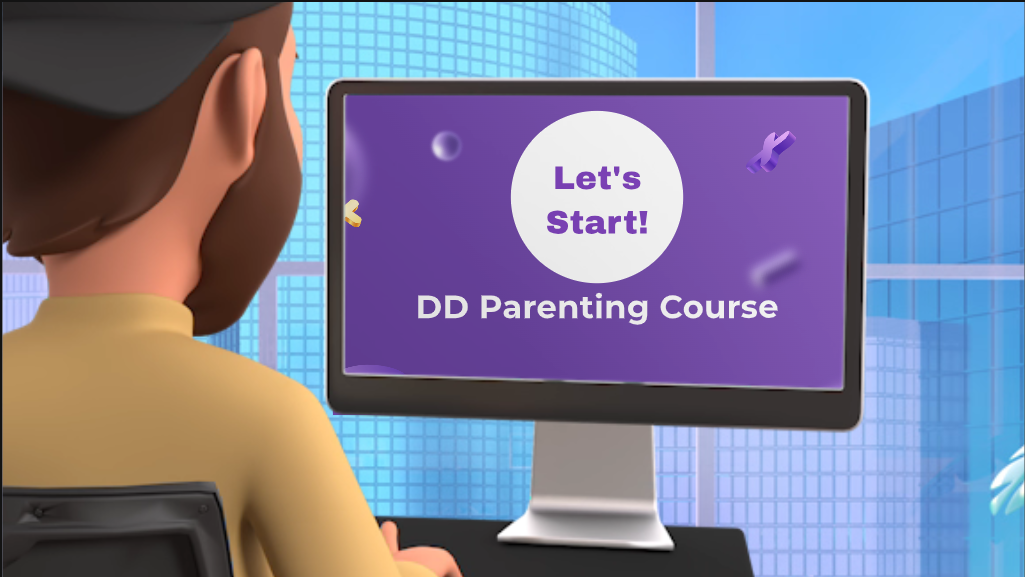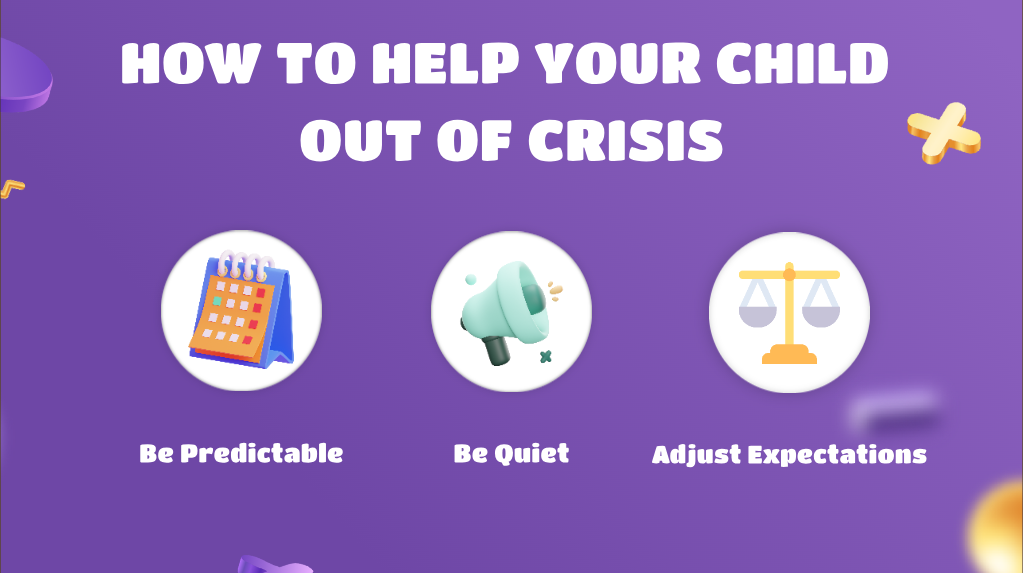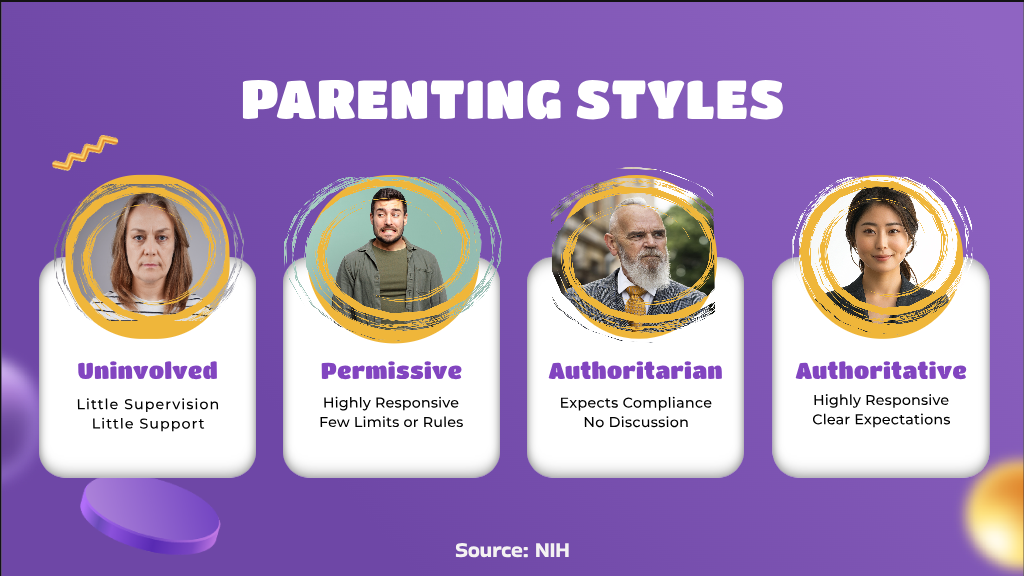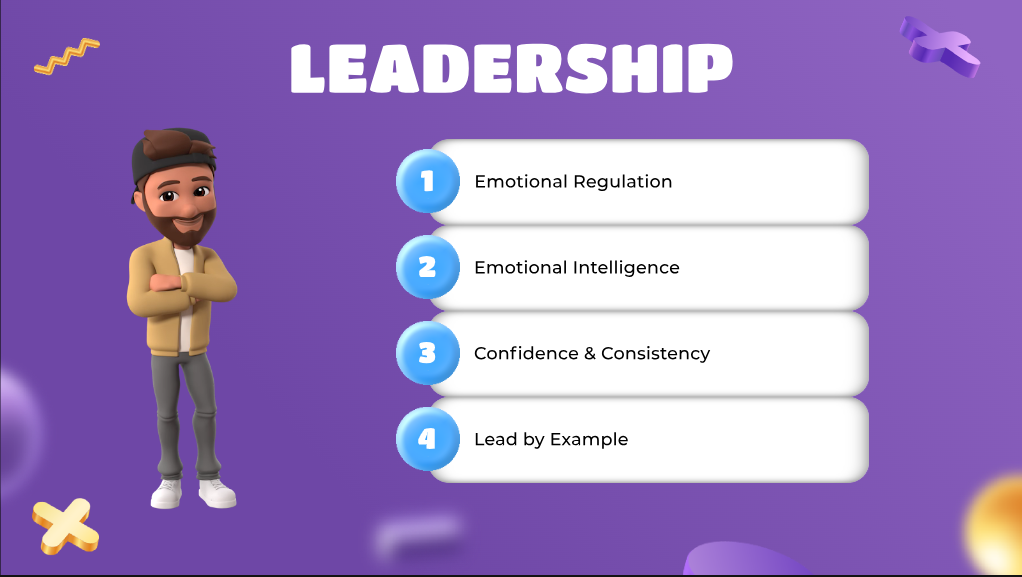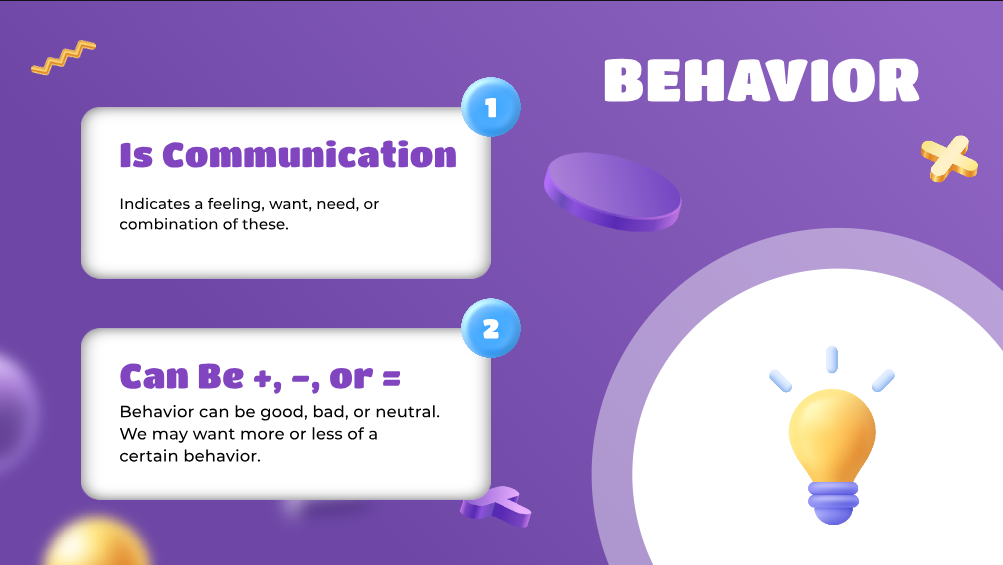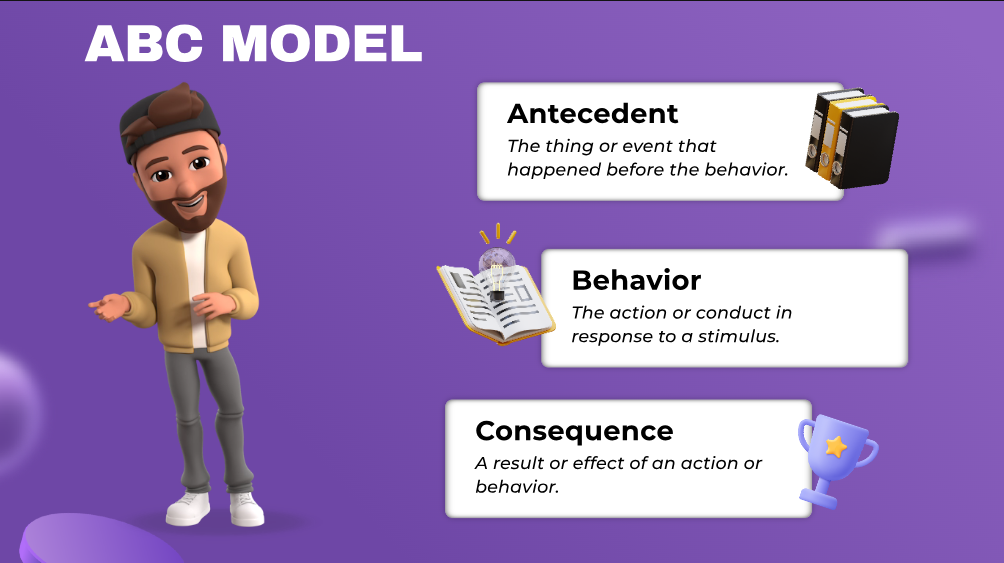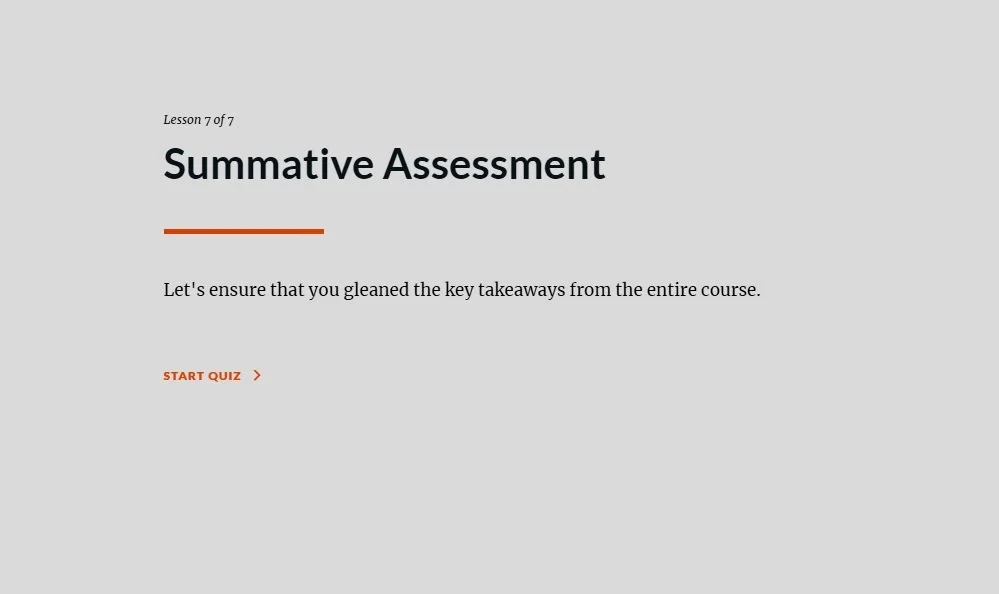Welcome to the
Parenting Children with Developmental Disabilities
course!
Sometimes, the parenting strategies that work well with naturally compliant kids don’t work with our strong-willed, neurodivergent, or mental health-challenged children. We can all benefit significantly from learning about parenting best practices, but only if the content aligns with our unique family challenges. To help solve this problem, the following course was developed.
Target audience for this course:
Parents of children with developmental disabilities (e.g., Autism, ADHD, ODD, PDD).
Learning Objectives:
To build knowledge, skills, or abilities (KSAs) relating to family crisis, parenting styles, parent leadership, behavior management, and effective communication.
To integrate current KSAs (like perseverance, advocacy, and empathy) with newly formed KSAs to promote informed and intentional parenting decisions.
Within this course, we will cover:
A course introduction. (1 Minute)
How to move out of crisis and help your child do the same. (About 10 minutes with quiz.)
How different parenting styles impact children into adulthood. (About 10 minutes with quiz.)
How becoming a high quality leader can impact your child’s behavior and your family dynamics. (About 10 minutes with quiz.)
How your child communicates through their behavior. (About 10 minutes with quiz.)
How to influence your child’s behavior through your responses. (About 10 minutes with quiz.)
How to communicate in a way that your child can hear and process. (About 10 minutes with quiz.)
A summative assessment. (About 10 minutes.)
Note: this is a free resource produced by a M.Ed. student as part of a Capstone Project. While the content comes from credible sources, it is important to consult with a professional about your specific situation.
How to navigate this course:
Click “Start Video” within each lesson below to get started. After viewing the lesson video, click the knowledge check link (“here”) to start the formative assessment. After each lesson, please return to this site to continue on throughout the course.
INTRODUCTORY VIDEO
A cartoon image of a middle-aged man working on a computer with the words “Let’s Start” and “DD Parenting Course” on the purple monitor screen.
lesson 1: getting out of crisis
A purple slide image with the title “How to Help Your Child Out of Crisis” at the top and three icons below. The first icon is of a check list and has the words “Be Predictable” underneath. The second icon is of a megaphone with an “x” nearby and has the words “Be Quiet” below. The third icon is of balance scales with the words “Adjust Expectations” below.
Start Video
Check your understanding by clicking on “Getting Out of Crisis” here.
For more information about Getting Out of Crisis, check out the resources available at Synergy Autism Center.
lesson 2: parenting styles & their impact
A purple slide image with the title “Parenting Styles” and pictures of four individuals below. The first individual has a muted expression on her face and the words “Uninvolved”, “Little Supervision”, and “Little Support” underneath. The second individual has a concerned look on their face and the words “Permissive”, “Highly Responsive”, and “Few Limits or Rules” underneath. The third individual has a strict look on their face and the words “Authoritarian”, “Expects Compliance”, and “No Discussion” underneath. The fourth individual has a subtle smile on her face and the words “Authoritative”, “Highly Responsive”, and “Clear Expectations” underneath. Last, a source name is provided and it is “NIH”.
Start Video
Check your understanding by clicking on “Parenting Styles” here.
For more information about Parenting Styles, check out the classes and resources at Parent Teacher Coach.
lesson 3: quality leadership
emotional regulation starts with you
A purple slide image with a middle-aged male cartoon character on the left, the title “Leadership” at the top, and four bullet points. The first bullet is “Emotional Regulation”, the second bullet is “Emotional Intelligence”, the third bullet is “Confidence & Consistency”, and the fourth bullet is “Lead by Example”.
Start Video
Check your understanding by selecting “Quality Leadership” here.
For more information about Parental Leadership, check out the podcasts and resources at Celebrate Calm.
lesson 4: behavior is communication
A purple slide image with the title “Behavior”, two bullet points, and a lightbulb image. The first bullet says “Is Communication” and “Indicates a feeling, want, need, or combination of these”. The second bullet says “Can Be +, -, or =” and “Behavior can be good, bad, or neutral. We may want more or less of a certain behavior”.
Start Video
Check your understanding by selecting “Behavior - Part 1” here.
For more information about Behavior, check out the articles and resources at Psychology Today.
To learn about Parent-Child Interaction Therapy (PCIT), visit Monarch Behavioral Health’s site.
To learn about Equine Assisted Therapy and how it can be used to change behavior, check out the Hearts to Horses website.
LESSON 5: reinforcing & deterring behavior
A purple slide image with a middle-aged male cartoon character, the title “ABC Model”, and three points. The first point has an icon that appears to be a row of books and says “Antecedent” and “The thing or event that happened before the behavior”. The second point has an icon that appears to be an open book with a lightbulb inside and says “Behavior” and “The action or conduct in response to a stimulus”. The third point has an icon that appears to be a trophy and says “Consequence” and “A result or effect of an action or behavior”.
Start Video
Check your understanding by clicking on “Influencing Behavior - Part 2” here.
For more information about Behavioral Intervention, check out the APBA and RDI websites.
To learn about Parent-Child Interaction Therapy (PCIT), visit Monarch Behavioral Health’s site.
lesson 6: communication best practices
A purple slide image with the title “Respectful Communication” and eight bullets below. The first bullet has an icon of an ear and the words “Listen Attentively”. The second bullet has an “shh” emoji and the words “Don’t Interrupt”. The third bullet has a volume icon and the words “Normal Tone of Voice”. The fourth bullet has an icon of a head with a clock overtop and the words “Patience - Honor their processing speed”. The fifth bullet has an icon of a person with speech bubbles and the words “Speak to them - not about them”. The sixth bullet has an icon of stacked boxes with a circle around them and the words “Focus on abilities - not disabilities”. The seventh bullet has an icon with a positive symbol and the words “Use Positive Language - More positives than negatives”. The eighth bullet has an icon with three boxes and an arrow indicating making a choice for the fourth box, along with the words “Enable Agency - in how you phrase questions”.
Start Video
Check your understanding by clicking on “Communication Best Practices” here.
For more information about C2U (Connect To You), check out the podcasts and videos at Synergy Autism Center.
check your knowledge
A grey slide image of a quiz with the title “Summative Assessment” and the words “Let’s ensure that you gleaned the key takeaways from the entire course” and “start quiz”.
Check your course knowledge by clicking on “Summative Assessment” here.
references
Association of Professional Behavior Analysts | APBA. (n.d.). https://www.apbahome.net/
Autism | Synergy Autism. (n.d.). Synergy Autism. https://www.synergyautismcenter.com/
Behavior is Communication: A Deeper Dive | Crisis Prevention Institute (CPI). (n.d.). Crisis Prevention Institute (CPI).
https://www.crisisprevention.com/blog/education/behavior-is-communication-a-deeper-dive/
Bureau of Quality Improvement Services. (2015). ABC (Antecendent-Behavior-Consequence) model.
https://www.in.gov/fssa/ddrs/files/AssistedSupports_BS_BT_ABC_V2.pdf
Celebrate Calm. (2024). Get Everything Package. Celebrate Calm Audio Series.
https://celebratecalm.com/products
Calm Parenting Podcast. (2024, April 28). Calm Parenting Podcast. Celebrate Calm | Stop Power Struggles With Strong-Willed Children.
Clinic, C. (2024, September 12). Always on Alert: Causes and examples of hypervigilance. Cleveland Clinic.
https://health.clevelandclinic.org/hypervigilance
Developmental disorders and delays. (n.d.). Psychology Today. https://www.psychologytoday.com/us/basics/child-
development/developmental-disorders-and-
delays#:~:text=Limited%20spoken%20language.,esteem%2C%20and%20low%20frustration%20tolerance.
Dictionary.com | Meanings & Definitions of English Words. (2024). In Dictionary.com.
https://dictionary.com/browse/emotional%20intelligence
Equine Therapy | Hearts to Horses | Kuna. (n.d.). Hearts to Horses. https://www.heartstohorses.org/
Get out of crisis. (n.d.). Synergy Autism Center.
Gutstein, S., & Gutstein, S. (2015, September 21). Moving out of Crisis: The First Step | RDIconnect. RDIconnect | Parent and
Professional Training. https://www.rdiconnect.com/moving-out-of-crisis-the-first-step/
How to get out of a crisis. (n.d.). www.MentalHelp.net. https://www.mentalhelp.net/blogs/how-to-get-out-of-a-crisis/
Hume, K., PhD. (n.d.-b). Transition Time: Helping Individuals on the Autism Spectrum Move Successfully from One Activity to Another.
Indiana Resource Center for Autism. https://www.iidc.indiana.edu/irca/articles/transition-time-helping-individuals-on-the-autism-
spectrum-move-successfully-from-one-activity-to-another.html
Monarch Behavioral Health, LLC. (n.d.). Monarch Behavioral Health. Monarch Behavioral Health. https://monarchbh.com/what-is-pcit-
Nannery, S. a. L. (2024, August 12). Autism or no, understand what you’re dealing with when someone is overwhelmed. Psychology
tantrum#:~:text=One%20of%20the%20most%20important,of%20the%20self%20to%20regulate.
NCSE Speech and Language Therapists. (n.d.). Using visuals to support communication. In NCSE Speech and Language Therapists.
https://ncse.ie/wp-content/uploads/2021/06/Using-Visuals-to-Support-Communication.pdf
Ott, C. (n.d.). What is Emotional Intelligence? In Ohio State University Extension [Journal-article].
https://ohio4h.org/sites/ohio4h/files/imce/Emotional%20Intelligence%20Background.pdf
Parent teacher coach. (n.d.). Parent Teacher Coach. https://parentteachercoach.com/
Psychology Tools. (2023, February 21). resource | Psychology Tools. https://www.psychologytools.com/resource/abc-
2C%20Behavior%2C%20Consequences.,behavior%20(Yomans%2C%202008).
The benefits of parenting education. (2016). In A Review of the Literature for the Wilder Parent Education Center.
https://www.wilder.org/sites/default/files/imports/LitReviewSummary_10-16.pdf
Hodara, J. (2023, December 28). ABA Therapy for PDA: A "How? When? Why?" Guide for Parents. Blue ABA.
https://blueabatherapy.com/aba/aba-therapy-for-pda/
Hume, K., PhD. (n.d.). Transition Time: Helping Individuals on the Autism Spectrum Move Successfully from One Activity to Another.
Indiana Resource Center for Autism. https://www.iidc.indiana.edu/irca/articles/transition-time-helping-individuals-on-the-autism-spectrum-move-successfully-from-one-activity-to-another.html
Potoczak, K., Carr, J. E., & Michael, J. (2007). THE EFFECTS OF CONSEQUENCE MANIPULATION DURING FUNCTIONAL
ANALYSIS OF PROBLEM BEHAVIOR MAINTAINED BY NEGATIVE REINFORCEMENT. Journal of Applied Behavior
Analysis, 40(4), 719–724. https://doi.org/10.1901/jaba.2007.719-724
Weiss, M. R., & Phillips, A. C. (2015). Motivation in youth sport and Physical activity: Developmental perspectives. In Elsevier eBooks
(pp. 914–920). https://doi.org/10.1016/b978-0-08-097086-8.26019-4
What is hypervigilance? (2024, February 25). WebMD. https://www.webmd.com/mental-health/what-is-hypervigilance

